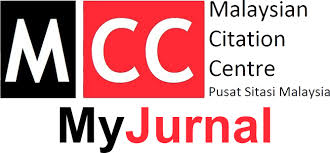Evaluation of Antioxidant and Antimicrobial Activity of Saponin Extracts from Different Parts of Argania spinosa L. Skeels
DOI:
https://doi.org/10.36877/pmmb.a0000338Abstract
The argan tree is a versatile forest tree (silviculture-fruit-forestry) of great importance for the country both in biological, phytogenetic and ecological biodiversity as well as in economic and social aspects. It has significant medicinal and therapeutic potential. The present study concentrated on saccharide-containing molecules, particularly saponins, for their medicinal properties. Butanol was used to fractionate phytochemical groups from different parts of Argania spinosa (branch, leaf, pulp, shell and seed), which were subsequently precipitated in ether. It was found that solvent fractionation increased the total saponin amount according to the colorimetric test using vanillin and sulfuric acid. The butanol fraction of the argan shell and its precipitate showed the highest levels of triterpene saponins compared to the rest of the plant parts studied. The samples showed antioxidant capacity by DPPH versus ascorbic acid (IC50 = 1.92 µg/mL) and by ABTS using the similar standard (IC50 = 11.31 µg/mL). The antioxidant activity of the samples was significantly improved from the crude shell extract (IC50 = 5.85 µg/mL) to its butanolic fraction (IC50 = 2.94 µg/mL) and its precipitate (IC50 = 1.57 µg/mL) using 2,2-diphenyl-picrylhydrazyl. Indeed, the ABTS test, showed similarity to the core results. Also, the solid disc diffusion method was used to highlight the antimicrobial activity of extracts from different parts of the Argania spinosa plant. The EtOH 70% and Aqueous leaf extracts exhibited the highest antibacterial activity, resulting in an inhibition zone of approximately 13 mm against the growth of Staphylococcus saprophyticus. On the other hand, the extract of saponin filtrate from the pulp part of the plant displayed the lowest antibacterial activity, with an inhibition zone of 9 mm. All studied types of saponin extract from different parts of the plant do not contribute to any antifungal activity against Botrytis cinerea.
Downloads
Published
How to Cite
Issue
Section
License
Copyright (c) 2023 Yousra El Idrissi, Youssef Elouafy, Hamza El Moudden, Najoua Mghazli, Chakir El Guezzane, Adil El Yadini, Hicham Harhar, Abdelkader Zarrouk, Khang Wen Goh, Long Chiau Ming, Abdelhakim Bouyahya, Mohammed Tabyaoui

This work is licensed under a Creative Commons Attribution-NonCommercial 4.0 International License.
Author(s) shall retain the copyright of their work and grant the Journal/Publisher right for the first publication with the work simultaneously licensed under:
Creative Commons Attribution-NonCommercial 4.0 International (CC BY-NC 4.0). This license allows for the copying, distribution and transmission of the work, provided the correct attribution of the original creator is stated. Adaptation and remixing are also permitted.

This broad license intends to facilitate free access to, as well as the unrestricted reuse of, original works of all types for non-commercial purposes.
The author(s) permits HH Publisher to publish this article that has not been submitted elsewhere.




.png)

.jpg)
